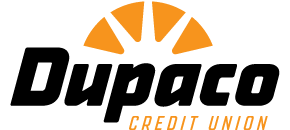Should I get a HELOC just in case? Here’s what to consider
Life can be unpredictable—and expensive. Maybe it’s a sudden roof repair, an emergency medical bill or a job change you didn’t see coming.
If you’re a homeowner, you might have an opportunity to plan for these just-in-case moments by tapping into the equity you’ve built in your home.
Think of a home equity line of credit, or HELOC, as a financial safety net. If you don’t have a specific need—or aren’t sure what the future holds—it gives you access to funds, just in case.
This option can offer flexibility and peace of mind. But is it a smart financial move for you?
Let’s explore the pros and cons of opening a HELOC that you don’t plan to use right away.
What’s a HELOC?
A HELOC is a revolving credit line that allows you to borrow money against the equity in your home. You can use the funds—or not—for whatever you’d like.
It works a bit like a credit card. You’re given a maximum credit limit and can borrow, repay and borrow again while the credit line is open.

Unlike a credit card, though, a HELOC is considered a second mortgage. Since the loan is secured by your home, HELOCs generally come with lower interest rates and potentially lower monthly payment options compared to credit cards or personal loans. And you only pay interest on the money you actually borrow.
Once you have the HELOC in place, you can use the funds for whatever purpose you choose, including:
- Debt consolidation: Transfer and combine your loan and credit card balances into one loan, potentially lowering both your interest and monthly payment. Learn more about how debt consolidation works here.
- Home improvement: Many projects, like a kitchen remodel or adding solar panels, could potentially increase the value of your home—in turn boosting your home’s equity.
- Anything at any time: Use the funds for an emergency, a new vehicle or something else.
Want more details? Here’s how a HELOC works >
Is it bad to have a HELOC and not use it?
A HELOC is there for you to use—or not use! And many homeowners open a HELOC and don’t use it right away.
It’s there if you need it—for medical bills, home maintenance or other surprises. That said, it’s still a good idea to build an emergency savings fund too.
Get tips to build your emergency savings >
Just be sure to understand the HELOC terms upfront.
Some lenders charge annual fees, even if you don’t borrow from it. (Hint: At Dupaco, there’s no minimum balance or annual fee to keep your HELOC open.)
You’ll also want to understand how your interest rate might change over time while your HELOC is open.
Is now a smart time to open a HELOC?
That depends on your financial situation goals and comfort level with debt. You can ask yourself a few questions to help you decide:

If you answered yes to any of these, a HELOC could be helpful—even if you don’t need the funds right now.
Try our free home equity calculator >
Is there a downside to having the line of credit?
While HELOCs offer flexibility and often lower interest rates, they aren’t risk-free.
One of the biggest considerations? A HELOC uses your home as collateral. That means if you can’t make your payments, you could risk losing your home. That’s why it’s so important to borrow responsibly and make your payments on time, every time.
It’s also important to understand that HELOCS typically come with variable interest rates. That means your rate—and your monthly payment—can go up or down based on market conditions. So, it’s a good idea to be prepared for that possibility, just in case.
That said, most credit cards also have variable rates—often higher than HELOCs. So, if you’re already using credit cards, you’re probably already used to rate changes!
And finally, if you plan to sell your home, you’ll need to pay off your home equity line of credit in full before your sale can close.
Final thought
A HELOC can be a powerful financial tool—but only if it aligns with your goals and risk tolerance.
If you’ve built equity in your home, have solid credit and are financially cautious, opening a HELOC “just in case” could offer the peace of mind you’re looking for.
Just make sure to:
A HELOC isn’t a one-size-fits-all solution. But when used wisely, it can be a flexible safety net when life takes an unexpected turn.


